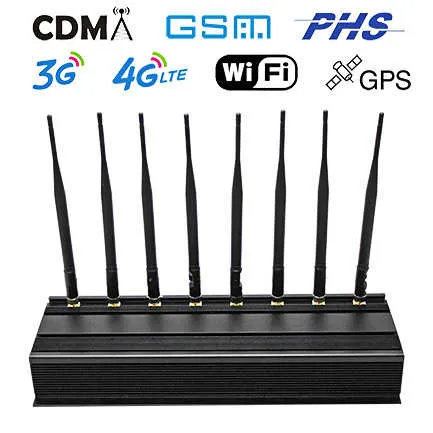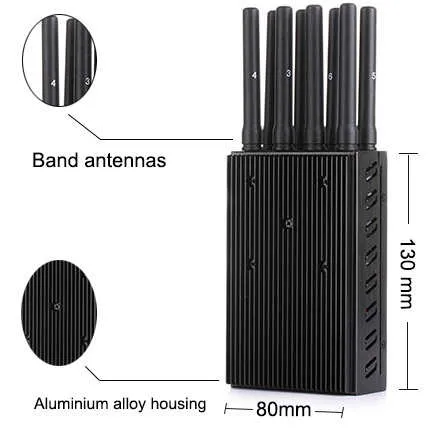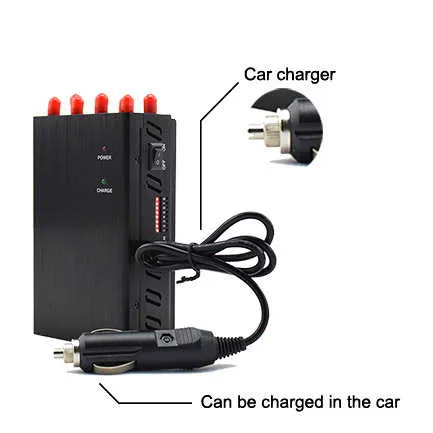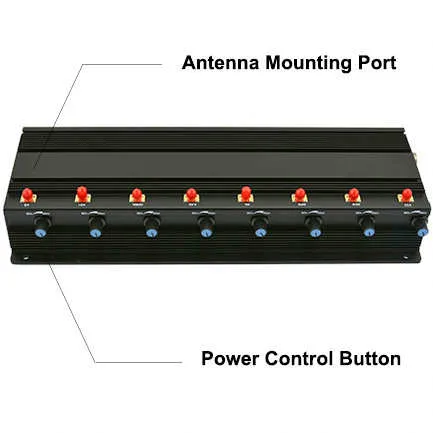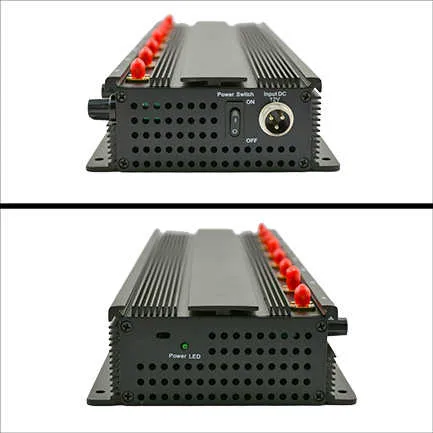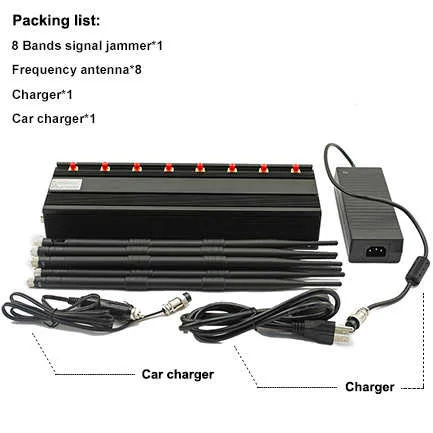Ensuring the safety and security of both staff and inmates within correctional facilities is of utmost importance. Implementing stringent security measures is crucial to maintain control and prevent dangerous situations from arising. Sadly, the presence of cellphones in prisons poses a significant threat to this goal.
One of the main challenges that correctional facilities face is preventing contraband items from entering the prison. Traditional security measures such as body scanners, metal detectors, and thorough searches often prove ineffective in detecting smaller items like cellphones. Inmates and their accomplices have become increasingly creative in concealing these devices, exploiting vulnerabilities in the system.
Once cellphones find their way into prisons, they become powerful tools for organizing criminal activities within and beyond the facility's walls. Gang leaders, drug dealers, and other inmates can use cellphones to coordinate illicit operations, intimidate others, and even continue conducting their illegal businesses from behind bars.
In response to the Greenville Veteran's Suicide Incident, correctional facilities are under immense pressure to strengthen security measures and address the issue of cellphone access within prisons. The incident demonstrated the urgent need for innovative solutions and strategies to combat this growing problem.
This article was published in partnership with The Marshall Project, a nonprofit news organization covering the U.S. criminal justice system. Subscribe to the newsletter or follow The Marshall Project on Facebook or Twitter.
Shortly before noon on Sept. 11, 2018, a former Army soldier named Jared Johns lay in bed, turned on his iPhone camera, and said goodbye to his family.
Near the end of the two-minute video, Johns' eyes widened as a text message read on the screen: "She's calling the police and you're going to jail," it read.
Johns, who had served in Afghanistan, took a deep breath, placed a 9mm pistol under his chin, and pulled the trigger.
The 24-year-old veteran is one of hundreds of former and current service members who have fallen victim to a "sextortion" conspiracy. The scheme that led to his suicide involved scammers posing as underage girls on dating sites. Prosecutors said they sought to extort men who responded to their solicitations.
But the most startling aspect of the plot in Johns’ case was that it was allegedly carried out by inmates at Lee Correctional Institution, a maximum security prison in South Carolina about 150 miles east of Greenville. And the inmates did it using smartphones — banned devices that should have been blocked by the prison’s $1.7 million “managed access system.”
Now prison officials and some federal agencies have proposed purchasing an even more complex and potentially more expensive technology to stop illicit cellular and Wi-Fi messaging from contraband phones in prison: a jammer that will block all calls within its range.
“Inmates are incarcerated physically, but they’re still free, digitally,” said Bryan P. Stirling, the director of the South Carolina Department of Corrections, who has been on a mission to get signal jammers in prisons since 2009.
But some experts warn that jamming technology, which the federal Bureau of Prisons recently tested in a South Carolina prison, could put the public at risk by interfering with 911 calls and other cellphone service nearby. For rural prisons, the concern focuses on drivers on local roads and highways. Plus, they say, the technology probably won’t work.
“They’re taking an internal problem and impacting people who are not involved,” said Richard Mirgon, a former executive at the Association for Public-Safety Communications Officials. “It’s tantamount to saying, ‘Why not jam up the freeway to keep people from speeding in the side streets?’ It’s just so extreme.”
Problems with the best solution
The best solution, according to telecommunications companies and advocates for prisoners’ rights, would be to stop the influx of cellphones into prisons. But that has proven difficult,
especially at a prison like Lee, which has a long history of serious phone-related incidents. Inmates there have used contraband cellphones, for example, to order a hit on a corrections officer who was shot almost to death in 2010 and to publicize prison riots twice in the past four years.
Sex, drugs and cellphones:Relationships between guards, inmates unravel SC prisons
Prison officials at Lee say they have tried to stem the tide. In 2017, the corrections department felled large trees that loomed over the prison to stop drones from dropping off packages of cellphones. That same year, the department spent $8.3 million to install 50-foot netting at the perimeter of its prisons, including Lee, in hopes of stopping couriers from throwing backpacks of cellphones over fences.
Corrections officials say these solutions reduced the number of cellphones in state prisons. In fiscal year 2017, prison guards confiscated 7,482 phones, batteries or chargers in the state’s facilities, which house more than 21,000 people. In the fiscal year that ended in June, officials collected 3,900. Chrysti Shain, a spokeswoman for the corrections department, said that inmates now must spend thousands of dollars to acquire a phone.
Yet, the department acknowledges phones still get inside. Experts point to low-paid guards and prison workers who can augment their low pay by selling inmates contraband.
But even if cellphones get in, there should be no calls getting out. That’s because of the nearly $2 million in technology that Lee officials purchased to block calls from unauthorized phones.
Challenges with cellphone signal blocking
In 2017, after clearing the treeline and setting up the nets, the corrections department hired Tecore Networks, a communications company, to install the system that is supposed to detect and block all calls made from contraband phones. The technology is supposed to work like this: If someone makes a call, the system compares the cell number to a predetermined list of prison staff phone numbers — called a white list —and then either allows the call to go through, or blocks it.
The wireless telecommunications lobby group CTIA, which represents some of the country’s largest carriers and equipment manufacturers, has recommended that prisons use the managed access systems, as they are called. But it’s unclear how many facilities across the country actually do. Shawntech, another private company that sells managed access systems to correctional institutions, says it provides the multi-million dollar systems to close to 350 jails and prisons.
Even engineers who back the system as a solution warn that it’s not a silver bullet to stop all illicit calls, which can circumvent the system because of a very basic rule of how a cell tower works: If you can’t see it, it can’t see you.
When someone inside makes a phone call, the closest cell tower will pick up that signal. In a prison with a managed access system in place, the tower is usually located within the perimeter. But, for example, if an inmate stood behind a wall with water pipes, the cell signal would find the closest tower it could see, which would be outside the prison.
Also, cell companies often change the strength of a signal if customers in an area have bad reception. It’s like listening to two conversations happening at once in the same room; it’s easier for you to hear the loudest speaker. Whenever cell companies boost a signal, cellphones inside the prison will be able to find it more readily. It’s a problem that Tecore flagged in a 2018 press release.
That’s what South Carolina’s corrections officials say happened at Lee, and how the inmates contacted Johns in the first place.
Current and former prisoners at Lee said they could use cellphones easily, even with the managed access system in place. This year, inmates at Lee were caught live-streaming on Facebook.
“Walk into one room, and it’s fine; walk into another and you won’t be able to,” said a current inmate in the prison, who said he has used a prepaid Boost Mobile cellphone to make calls. His identity is not being revealed out of concern for his safety.
Tecore, which manages the prison’s system, did not respond to multiple emails or calls over several weeks seeking comment.
Jamming all calls, even to 911
These problems explain why corrections officials and federal agencies have proposed using technology long opposed by the communications industry: cellphone jammers to stop all calls, even from phones owned by staff or emergency workers.
Unlike managed access systems, which allow people to make calls if their numbers are on an approved list, a jammer is indiscriminate in its reach and power to block all frequencies, including data and Wi-Fi. That’s a problem for the nation’s 911 phone system, which operates on a frequency close to the one commercial carriers use.
Only federal authorities can legally use jammers, and only in limited circumstances involving national security. But with the blessing of the FCC’s Chairman Ajit Pai—appointed by President Trump in 2017— and the U.S. Department of Justice, prison jammers could become a possibility.
In September, the department and state officials put out news releases saying that a test at South Carolina’s Broad River Correctional Institution showed that a micro-jammer could block calls inside a cell block while allowing “legitimate calls” a foot outside its walls.
コメント数:(0)
カテゴリ:Cell Phone 12:35:08
